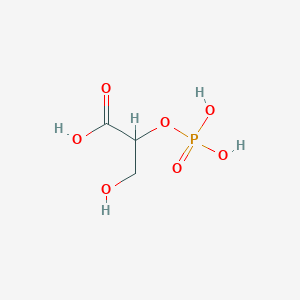Details of Metabolite
| Full List of Protein(s) Regulating This Metabolite | ||||||
|---|---|---|---|---|---|---|
| Transferases (EC 2) | ||||||
| Sphingosine kinase 1 (SPHK1) | Click to Show/Hide the Full List of Regulating Pair(s): 1 Pair(s) | |||||
| Detailed Information |
Protein Info
 click to show the details of this protein click to show the details of this protein
|
|||||
| Regulating Pair |
Experim Info
 click to show the details of experiment for validating this pair click to show the details of experiment for validating this pair
|
[1] | ||||
| Introduced Variation | Knockout of Sphk1 | |||||
| Induced Change | 2-Phosphoglyceric acid concentration: decrease | |||||
| Summary | Introduced Variation
|
|||||
| Disease Status | Chronic kidney disease [ICD-11: GB61] | |||||
| Details | It is reported that knockout of Sphk1 leads to the decrease of 2-phosphoglyceric acid levels compared with control group. | |||||
| Transaldolase (TALDO1) | Click to Show/Hide the Full List of Regulating Pair(s): 1 Pair(s) | |||||
| Detailed Information |
Protein Info
 click to show the details of this protein click to show the details of this protein
|
|||||
| Regulating Pair |
Experim Info
 click to show the details of experiment for validating this pair click to show the details of experiment for validating this pair
|
[2] | ||||
| Introduced Variation | Knockout of Taldo1 | |||||
| Induced Change | 2-Phosphoglyceric acid concentration: increase | |||||
| Summary | Introduced Variation
|
|||||
| Disease Status | Healthy individual | |||||
| Details | It is reported that knockout of Taldo1 leads to the increase of 2-phosphoglyceric acid levels compared with control group. | |||||
If you find any error in data or bug in web service, please kindly report it to Dr. Zhang and Dr. Mou.

